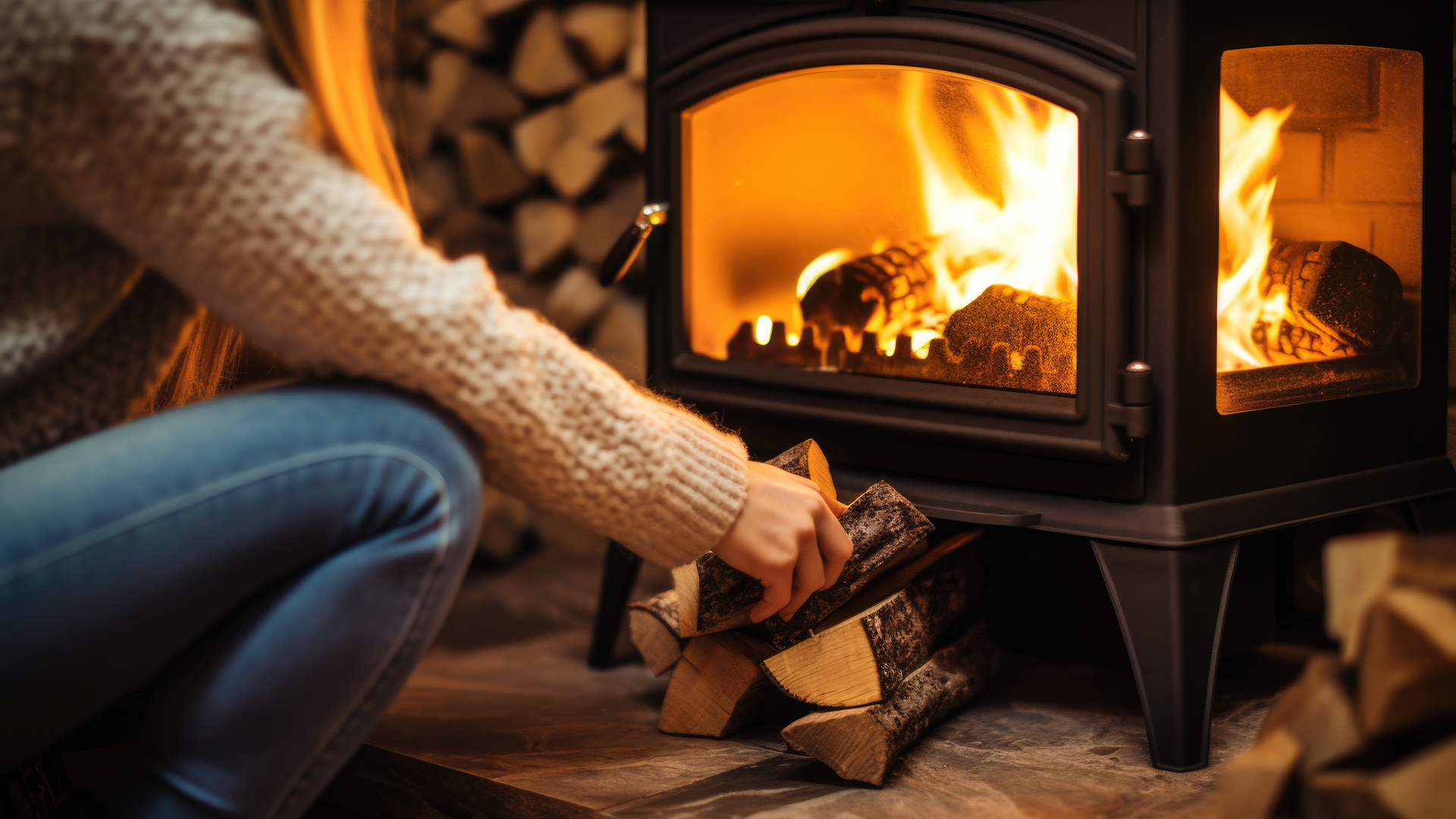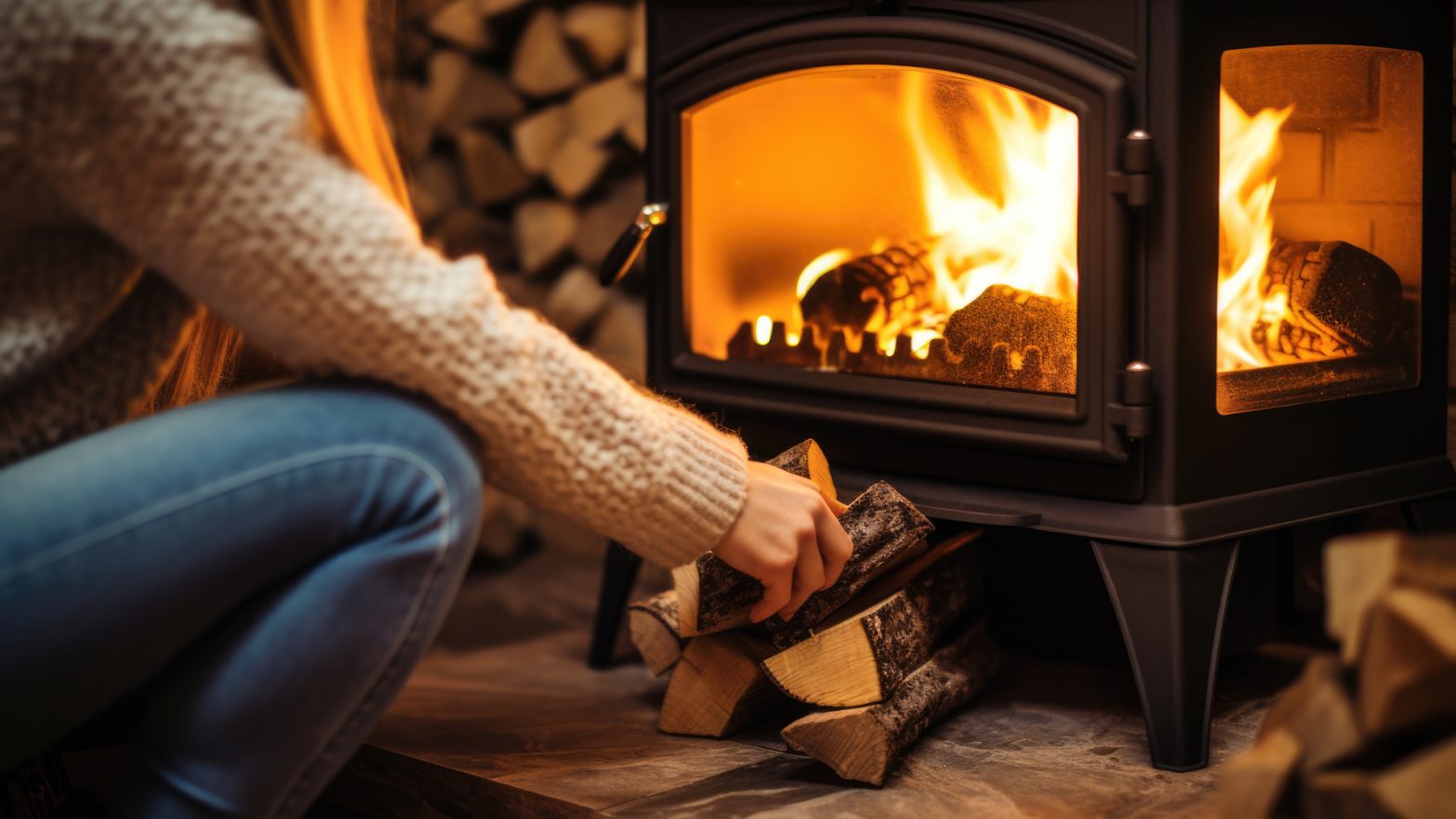
With reports from the Stove Industry Alliance (SIA) finding that 2022 saw a 40% sale increase in wood-burning stoves compared to the previous year, many new owners or log burners will be wondering what the best practice of not only lighting their first fire but for how best to look after the burner itself to keep it new for longer.
Stephen Talbot is the Sales Director of Logs Direct, the leading supplier of kiln dried logs, and has offered an expert guide to taking care of your log burner to make sure it lasts and performs to its highest standard.
Set a good precedent – building, lighting, and maintaining your fire
Having a strong fire isn’t as simple as putting random logs in the mouth of your burner, lighting a match, and throwing it in. There’s a lot to consider when building a fire, and if you build your first fire well, it’ll help you understand how best to make them going forward.
The first thing you should always consider is the wood you’re using. Ideally, you should use kiln-dried wood, or you can use naturally dried in the wood store. Drying can take between 1x year to 6x years to fully dry, depending on wood species, but dried wood burns hotter for longer and produces very little waste or smoke.
In comparison, trying to burn wet wood, which is difficult to light, will always black your glass, soot up the chimney, and give you very little heat from the stove. Just like putting water in a car engine instead of the correct fuels, it won’t work.
You should also consider whether you use hardwood or softwood for your fire. Hardwoods are denser and have a slower burn but can be more difficult to light in some smaller stoves, but they offer a longer and more consistent heat source, while softwoods have traditionally been known as the wood to avoid as it blocks the chimney with tars and burns too fast.
Many European countries only burn softwoods, so why doesn’t the UK? If the wood is properly dried, it will light easily and may not give quite as long a burn as hardwood, but it certainly will give you the heat and lots of exciting flame patterns.
Now you’ve got your wood, you’re ready to start your fire. The best way to build it is by starting with kindling wood in a stacked pattern like a Jenga tower or newspaper as a base, as it will light quickly and easily. From there, you can place your smaller logs in a crisscross pattern, which allows for proper air circulation, which will help sustain the fire and allow the logs to catch.
Once they’ve caught and the fire is roaring, it’s important not to overload your burner with lots of logs, as it will stifle the live flame and waste firewood that isn’t needed. Most fires will not need more than 1-2 logs at a time, so take your time and add more gradually.
From there, it’s just monitoring the airflow and temperature to make sure it stays balanced, and once you’ve come to the end of the night, simply stop adding logs and allow the fire to die out.
Keeping your log burner clean
There’s no better way to ensure your log burner stays efficient than regularly cleaning it. How often you do so will depend on how regularly you use it, with more uses meaning more regular cleaning.
Before beginning the cleaning process, make sure the burner has completely cooled to avoid any burns from leftover heat. This can take a while as the metal burners can conduct a lot of the heat, so give it plenty of time.
Grab yourself a pair of gloves and some clothes you don’t mind getting covered in ash, and it’s time to clean. The first thing on the to-do list is getting rid of the ash from a multifuel stove or, if it’s a dedicated wood burner, leave a small ash bed in the bottom as new fires light better in a bed of old ash. Our top tip is to shovel it into a bucket rather than using a brush, which can result in spreading it in the room. If you have only used wood-based products for fuel, then the ashes can be used as nutritious fertiliser to add to your compost to help plants grow, which is always a nice addition to your garden. You can then use a hoover to clean up the last bits that are left.
The outside is next, which is as simple as wiping it down with a cloth. Make sure it’s dry and soft, as a damp one could cause rusting to the metal. You can refresh the outside with black metal polish, which is available in tubes and can easily be wiped onto the stove and given a new lease of life when needed.
Cleaning the glass should follow, if you are burning dry wood, there should be very few marks on the glass, but if there are any, you’ve got plenty of options for cleaning it, from using dampened ash from the fire to wiping it and paper towels to remove it to bicarbonate of soda mixed into some water. You can also get purpose-built glass cleaner to be sure it’s all spotless.
When it comes to cleaning your chimney, we’d advise getting it professionally cleaned with an accredited chimney sweep as it can be quite difficult and often dirty if you don’t have the correct knowledge on sweeping.
Don’t forget about safety
In the end, log burners mean there’s an ongoing fire inside your home, which means you should always be considering how safe your home is. There are plenty of safety considerations to make, with the first being to check your smoke detectors and fire alarms, and we always recommend the use of Carbon Monoxide (CO) detectors. If any levels of gas or smoke leaks occur, you’ll be alerted to them.
Reduction of fire risks is also crucial, which is where keeping a fire extinguisher in case of emergencies can make a world of difference. Take a few minutes to make sure everyone in your household is clued up on how to use it properly. You can also do an audit of what’s around the burner and whether it’s flammable. If there’s a risk of it catching, move it.
Finally, if you’ve got kids in your home, it’s crucial to make sure it’s childproofed. Child safety Barriers are inexpensive and a fantastic solution to keep them away, as we want to avoid any curious little hands getting too close and burnt on the hot metal of the burner.
































